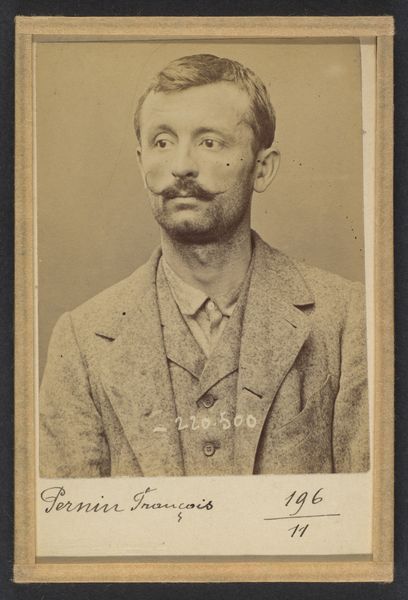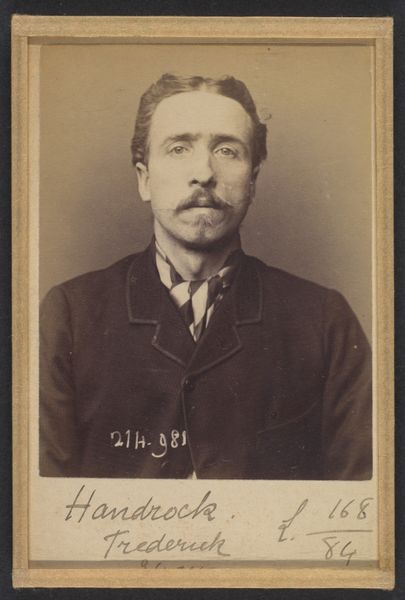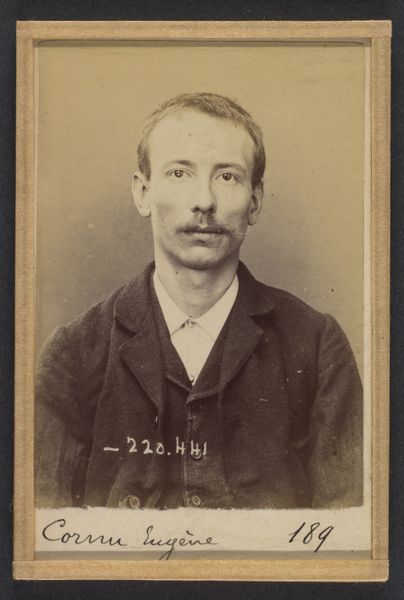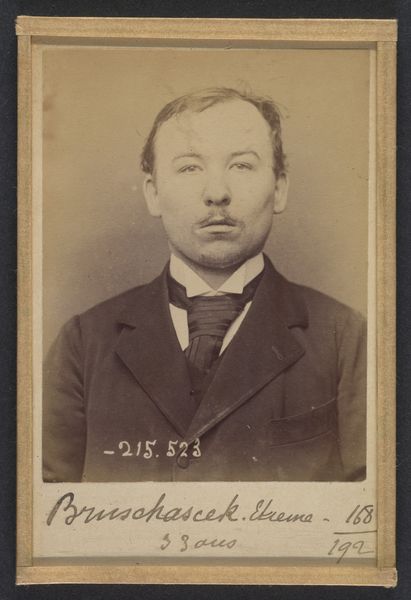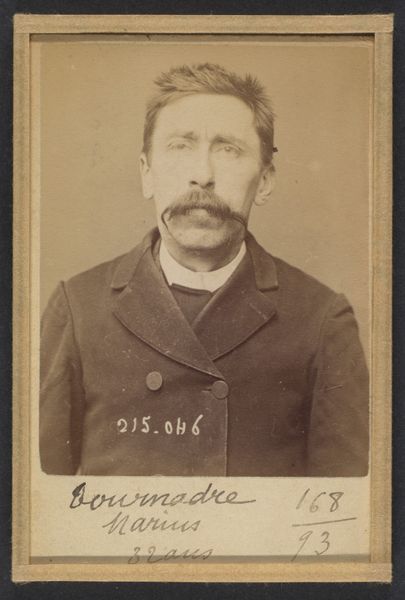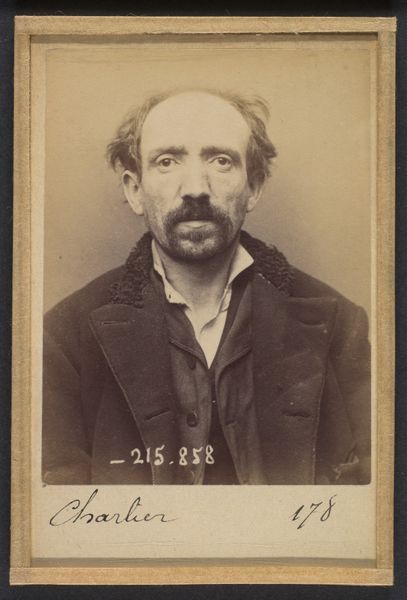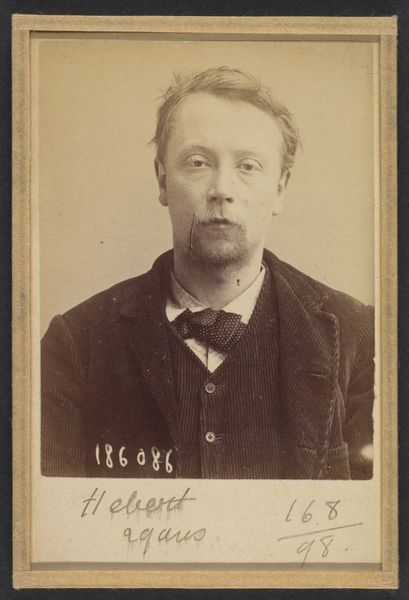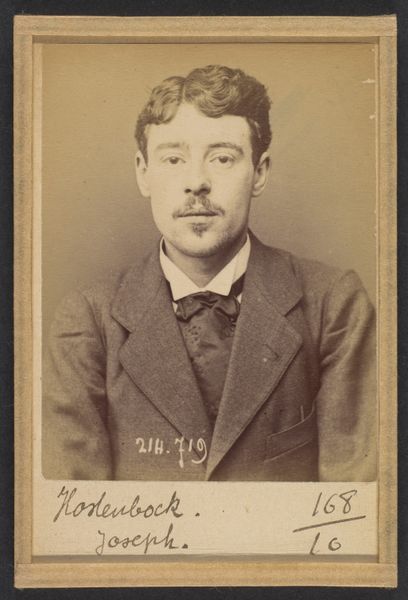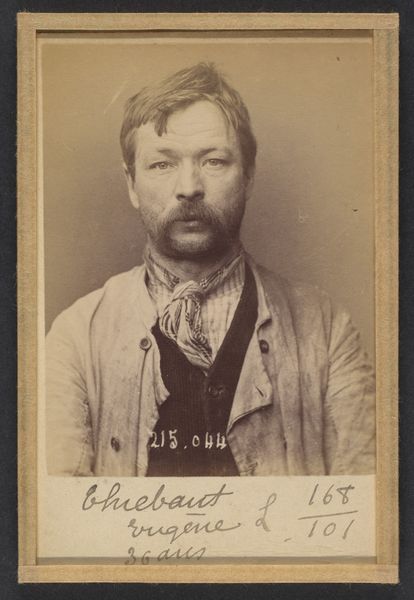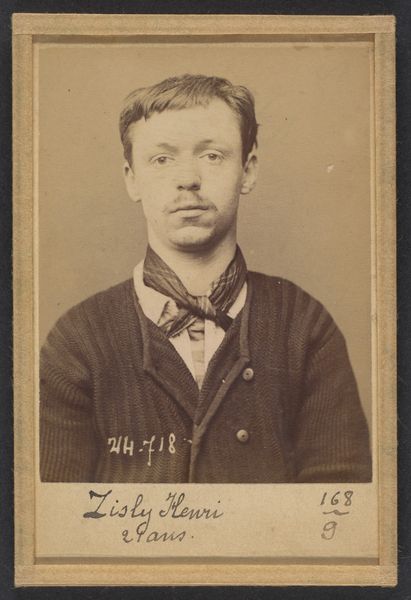
Chatillon. Jean-Baptiste. 31 ans, né à Toiseron des Minard (Cher). Employé de commerce. Note du cabinet. 10/5/82 1882
0:00
0:00
photography, gelatin-silver-print
#
portrait
#
portrait
#
photography
#
historical photography
#
gelatin-silver-print
#
history-painting
#
realism
Dimensions: 10.5 x 7 x 0.5 cm (4 1/8 x 2 3/4 x 3/16 in.) each
Copyright: Public Domain
Curator: This gelatin silver print, taken in 1882, is titled “Chatillon. Jean-Baptiste. 31 ans, né à Toiseron des Minard (Cher). Employé de commerce. Note du cabinet. 10/5/82.” The image is held at the Metropolitan Museum of Art and was produced by Alphonse Bertillon. Editor: Immediately, the sepia tones and rigid framing evoke a sense of constraint. The lighting flattens the subject's features. There’s a clinical detachment to it all. Curator: This image belongs to a series of portraits created using Bertillon's anthropometric identification system. These photographs, though seemingly objective, played a key role in constructing narratives of criminality and social deviance, particularly targeting marginalized communities in 19th-century France. The act of cataloging people based on physical attributes facilitated discriminatory practices within law enforcement and beyond. Editor: Yes, but there's also a remarkable attention to detail. Look at the subtle gradations in the background, the delicate textures in his clothing, the faint reflection in his eye. The photograph's materiality elevates it. Curator: But isn't the photograph's purpose crucial? It wasn’t created as a celebration of beauty, but as a tool for surveillance, for categorizing, and ultimately, controlling individuals deemed undesirable by the state. His youth, listed profession—everything about his life became subservient to that single moment of capture. Editor: Agreed. Yet, I am drawn to the geometrical relationships formed between the planes of the face, the neckline, the positioning of the handwritten numbers and signature along the lower portion. The structure dictates a controlled gaze. Curator: Looking closer, I think that’s a fallacy. To what extent was his identity—his inner self—being suppressed in order to achieve the parameters expected? The history of marginalised peoples isn't a history of objective portraiture. It's one of systematic oppression. Editor: It forces one to consider the objective of photographic portraiture itself: a tension of what’s revealed and concealed in those moments between subject and photographer. Curator: Bertillon's method reflects a societal inclination to categorize, judge, and exert power. It's a reflection on power and privilege. Editor: And yet, even in such a controlled environment, traces of individuality, humanity—a flicker of rebellion?—persist. Perhaps the formal constraints unintentionally revealed the underlying humanity the system sought to deny. Curator: Yes, perhaps by examining how Bertillon created this system, it can highlight ongoing dialogues concerning power and how systems impact individuals.
Comments
No comments
Be the first to comment and join the conversation on the ultimate creative platform.
